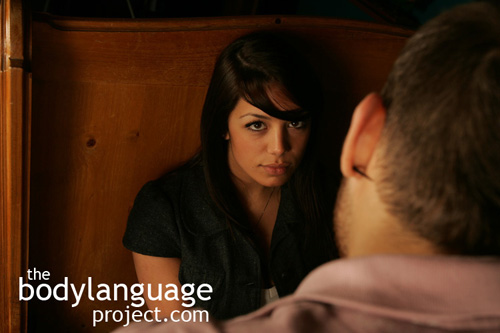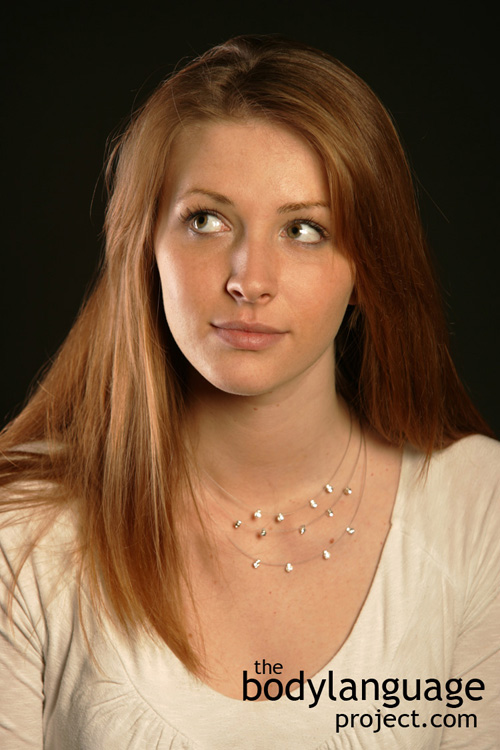It was all about the eyes in this chapter. We covered the friendly gaze where the eyes travel in a triangular pattern from eye to eye then to the mouth, the intimate gaze where the vast majority of time is spend looking at the eyes and mouth and the business gaze where eighty to ninety percent of the time is spent with direct eye contact and where the eyes never go below the neckline.
Next we covered how certain eye contact can be threatening, how to put your best side forward and how to avoid an attack by switching off the attack response. When looked at pupillometrics, or the study of pupil size in relation to emotion and we saw that larger pupils both signal attractiveness and interest. Having covered the basics it was time to put eye language into practice with the room encompassing glance, a clear signal of female interest, how blink rate can signal stress, an extended blink can be offputting and how the double wink can be sexy. Eye blocking was emphasized as a negative cue done to avoid harmful images or thoughts, and hit on eye flashes, eye widening and flashbulb eyes all carrying their own unique nonverbal message.
We found that by tilting the head at forty five degrees and looking upwards women can display the come-hither look invoking feelings of protectiveness in men. We also found that eye size was related to attractiveness and this was measured through research. Next we looked at shifty eyes and how they can predict stress, but not necessarily lying per se, looking askance to send “the look”, stealing looks and what it means, and how to properly address an audience through eye contact. NLP, we saw, refers to neuro-linguistic programming which is a system developed to induce behavioural changes and improve communication and derives its value by reaching for defined positive outcomes through identifying the roots by which thoughts affect images and sound or feelings. We then learned that NLP can help us predict things. For example, we saw that for most right-handed people, eye movement up and to the left is a signal of accessing a visual memory, movement up and right means that a person is trying to construct a visual image. Eyes either right or left, but still level, indicate an auditory process such as remembering sounds and words. Down and left indicate internal dialogue or self talk and down and right indicate a tactile or visceral feeling. When the eyes are straight ahead, unfocused or dilated they signal visual or any sensory information.
We also learned that there are three main ways in which people learn new information; auditory (spoken words) twenty five percent, kinesthetic (touch) forty percent and visual (images) thirty five percent. We also saw that eye direction has meaning where eyes focused straight ahead means passive receiving of information and eyes down means emotionally concentrating. From there we hit on appropriate eye contact during an interview and while communicating, the eyebrow and eye flash and what they mean and how they can be used.





